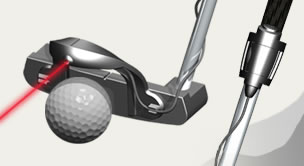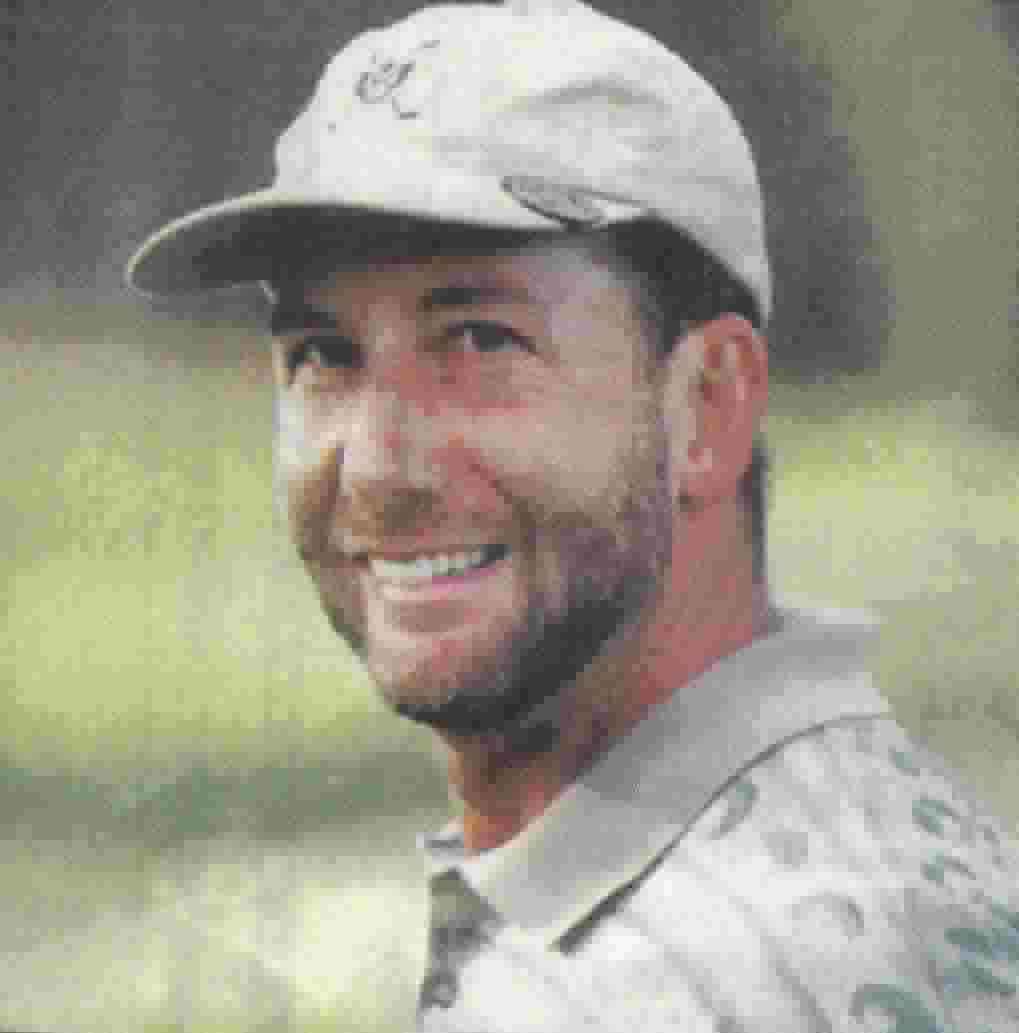Golf Alignment -- Judging the Correct Distance
In the last newsletter, we addressed the importance of alignment with the putting. I outlined a procedure to use to improve your alignment. View the previous newsletter
here.
Most golf courses now have yardage markers every 25 yards from 75 yards out to 250 yards. Thus, determining distance is now not as great of a problem as it was years ago. But, those markers are usually in the middle of the fairway. Most golfers miss over half of the fairways in the course of the round so some estimating must be done.
As I've reiterated in my past newsletters, proper alignment is essential to play well. Research studies have shown that the vast majority of amateur golfers misalign which causes swing faults, poor ball striking and errant golf shots. Once one has mastered the alignment process, however, it's important to accurately determine the distance left to the flag and then to select the optimum club to hit the ball that distance.
For a great video of the alignment process, click HERE.
Yardage markers are usually measured to the center of the green. The markers are usually located in the middle of the fairway. If you find your ball adjacent to say the 150 yard marker but on the right or left hand side of the fairway, you may actually be more than 150 yards from the middle of the green. The diagram below shows the target (flag) 150 yards away. Notice that a circle has been drawn. This circle is centered at the flag and has a radius of 150 yards. The fairway is shown has 60 yards wide (quite generous). At a point 30 yards left or right of the marker, the distance to the target is an extra 3 yards (about 10 feet), which would make the total distance 153 yards. The extra distance depends on how far left or right you are and on the total distance. The table below summarizes this information.

Length of Shot (yards) |
Distance Left or Right of Marker (yards) |
Distance to add (yards) |
100 |
10 |
0.75 |
20 |
1.50 |
30 |
2.25 |
150 |
10 |
1.0 |
20 |
2.0 |
30 |
3.0 |
200 |
10 |
1.5 |
20 |
3.0 |
30 |
4.5 |
Basically, for 100 yard shots, every 10 yards right or left adds 0.75 yards. For 150 yards, every 10 yards right or left adds 1.0 yard and for 200 yards, it adds 1.5 yards.
Using this information, one can determine the actual distance with greater accuracy. Here's the process to follow to determine the distance to your target:
1. While standing at your ball, locate the nearest yardage marker. Let's assume you've missed the middle of the fairway by 20 yards right, so you're 20 yards right of the center of the fairway. You now want to pace off the distance to the next yardage marker. Walk towards your target and pace off the distance until you reach a point where you are adjacent to the next yardage marker.
2. It's unlikely that your pace is equal to 1 yard. You either need to learn how to step out 1 yard length paces OR you need to convert your paces to yards (which is easiest especially if you have short legs). All you need to do is count the number of your paces it takes you to walk a measured distance. For example, walk off the distance between a 150 yard marker and a 125 yards marker. Then divide the distance, 25 yards, by the number of paces. Let's say you measure out 30 paces. then 30/25 = 0.83 which means your pace is 0.83 yards long, OR, 25/30 = 1.20 which means you take 1.20 paces per yard. You can either carry with you a little calculator, or just estimate the conversion. 30/25 = 6/5 or 6 paces = 5 yards. So take your paces, divide by 6 and multiply by 5 or multiply by 5 and divide by 6.
Example: You pace off 15 paces to the 150 yard marker. 15 divided by 6 is about 2.5, 2.5 times 5 is 12.5 so you add 13 yards to 150 yards to get 163 yards. Always round estimates up as there is always the tendency to come up short.
3. Since your ball is 20 yards right, you must add 1 yard for every 10 yards right. So you add 2 yards to your distance. For the example above, you would add 2 yards to 163 yards for a total of 165 yards. If your ball had been 40 yards right, you would add 4 yards instead of 2 yards.
4. So, that's the distance to the hole. You would then read the wind and measure any uphill or downhill variations add or subtract more yardage to get the total yardage for the shot. Then you must select the club the most likely will hit the ball that distance. It's best if you know your "club print" or shot pattern . Take a look at any trouble around the green and favour the opposite side. If there is a bunker or water in front, select the club that will hit the ball a little farther. That's called playing the percentages.
Proper Preparation Prevents Poor Performance

Take a look at the Laser Putting Device that I use and consider getting one for yourself. You can use it to improve your putting alignment. You can even attach it to the face of your iron when practicing your alignment process. Order yours TODAY! Only $49.95
If you'd like some help with your mental game, fellow Canadain, Lisa Brown is a mental toughness coach for National and Olympic athletes, and she has written some excellent ebooks. Click HERE to take a look. If you have any other great ideas of why or how to use new golf technology to improve, please share them with me and I'll include them in the next newsletter. Submit your suggestions HERE .
I'd appreciate any comments you have. Email them to
me at probablegolf@yahoo.ca
A list of resources that have been used to produce
this newsletter can be found on my web site here.The focus of my
site is to utilize science and math to lower your score.
New technology is one way to achieve this, but to be
honest, the technology is one small piece of the
puzzle.To actually improve
significantly, we all need to:
1. Improve our swings
using CD Interactive, Hit
Down Dammit!
2. Learn how much putts break by using BreakMaster Green Reader!
3. Improve our physical
fitness and strength.
The
Golf Trainer Power Performance ProgramT and Ultimate
Golf Fitness Ebook
4. Improve our mental
games. Golf
Mind Software
5. Improve our Probable
Golf games. Learn how to make better choices on the
course through knowing how shot patterns and reading the
elements and course better.Click on the links above
to take a look at ways that I personally use myself and
recommend you try as well.
Hope I provided some useful ways for you to
become better prepared for you best golf season
ever.
Ken Tannar
If
you are interested in receiving a newsletter dedicated
to the ideas of this site, use the form below to
subscribe.
Privacy Statement: We will not
use your mailing address for bulk mailings (spam). We
will send information you have requested only.
Furthermore, the frequency we will deliver the
information will be small (about one email message per
month). We will not pass your email address to third
parties under any circumstances.
| 












